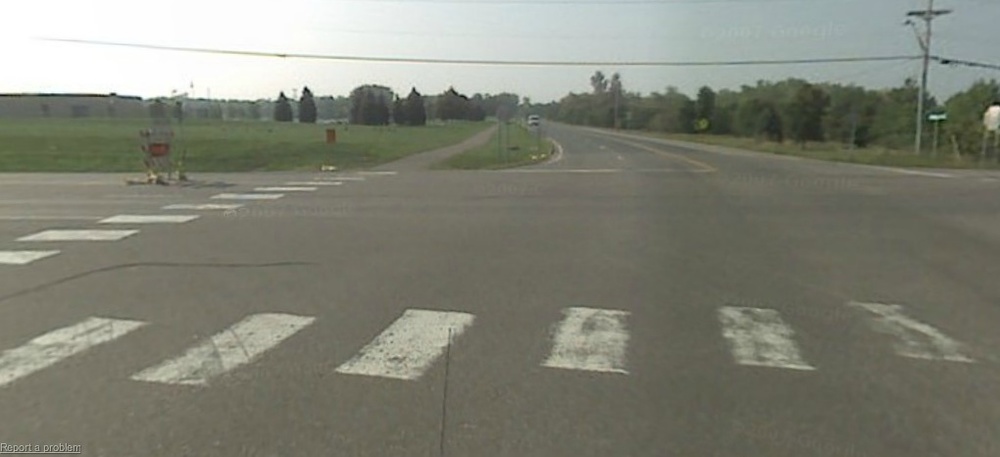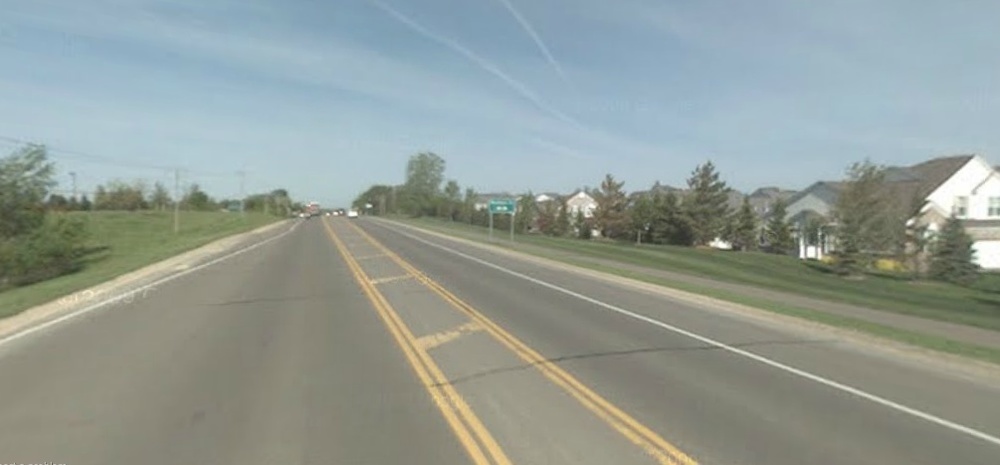The long drive to school: ignoring the new normal
Before we can collectively move our cities and towns into twenty-first century realities, we need to understand and acknowledge where we are today and why we have a problem. Instead, we’re sleepwalking into the future.
Take Bailey Elementary School in Woodbury, Minnesota. Like most suburban-style school buildings, it has a problem: kids don’t walk to school.
In the hubbub, no one notices what’s missing – the dying practice of walking to school. Of 620 students at Bailey, not one walks – not even those who live one block away. Managers of a 6-year-old federal program think they know why.
Children don’t walk to schools like Bailey because of the lack of sidewalks and safe street crossings. But after spending $820 million to promote walking to school and reducing childhood obesity, there is no sign the program has actually added any walkers at all.
[Source: Fewer students walk to school; Minnesota Public Radio, Emphasis: mine]
Of 620 students at Bailey, not one kids walks?
 It’s hard to blame parents for driving their kids when these are the types of intersections they need to cross.
It’s hard to blame parents for driving their kids when these are the types of intersections they need to cross.
This sounds startling, but if you look at the map you quickly understand that it’s reasonable for parents to not let their kids walk to school; the building is set back a great distance from the intersection of a busy collector road and a county highway and the nearby neighborhoods lack safe sidewalks. And while the intersection connecting Bailey to its nearby neighborhoods has a crosswalk, it has no stop lights despite four lanes of 55 mph traffic [Walk Score: 17].
Even if more sidewalks and safer crossings were added to the equation, we would still be ignoring the predicament of distance. We’ve arranged our neighborhoods in a way that they are very far away from everyday places. This costs us a great deal of time and money: parents need to drive their children to school before they head off to work (time) and use up gas in the process (money).
If Bailey added all the recommended changes, it would still be an impossible two to five mile hike for the average 10-year old. This systemic problem is obvious, yet we’re painfully clueless.
It’s widely accepted that many schools built in the last 20 years were deliberately designed to discourage walking. What’s puzzling to me is that more people weren’t concerned about this?
Many schools are resistant to change because they are designed for drivers, not pedestrians. Architect Paul Youngquist learned that lesson when he was planning the new East Ridge High School in Woodbury in 2007.
“I wanted to put the parking lots a bit away from the building,” Youngquist said. But at a meeting, someone was aghast at the idea that the move would make students walk farther.
“I said: `Good! A walk seems like an appropriate way to start the day,’ ” Youngquist recalled.
But the chorus of outrage swelled until he relented. He pushed the parking lots next to the building.
“They just don’t want to walk,” Youngquist said.
[Source: Fewer students walk to school; Minnesota Public Radio]
We don’t want to walk because, at a conscious or unconscious level, we realize that the stuff we’ve built isn’t worth walking by.
 If students walked to Bailey, this is the road they’d have to walk down.
If students walked to Bailey, this is the road they’d have to walk down.
It might be forgiveable if student walkers were overlooked or an afterthought. That wasn’t the case. They were specifically considered and the general concensus was to ignore them. Every time I think we are getting closer to acknowledging our predicament, I am reminded that we are addicted to our automobiles; and feel unsafe without them (if parents actually examined the numbers, they’d quickly realize their children are many times more likely to be injured in an automobile than by a kidnapper).
We are enamored with the automobile and most still see it as a ticket to the good life, not a burden on the checkbook. We’re entrenched in 70 years of a psyche that proclaims our prosperity as a nation is tied to our road system (and how fast we can get to the Applebee’s). The end result comes with the caveat that you have to burn a half-gallon of gasoline to pick up a half-gallon of milk.
The decisions to change our built environments have to start at the local level. Simple decisions like where to build schools, community centers and government office buildings are paramount. The dilemma is that we need to accept that our currents schools are where they are – surrounded by corn fields at the edge of town– but we aren’t going to tear them down anytime soon.
So what will happen to all this stuff we have built that we can't afford to maintain? The simple answer is that, if we can't afford to maintain it, we won't. … When resources get tight enough, things will fail and they will not be restored. We'll simply accept that failure and it will become the new normal. [Source: Suburban Salvage – Strong Towns Blog]
It won’t be long before we start seeing diminishing returns to projects reliant upon the variable cost of oil. We’ll use these places until we can’t afford them. Then, we'll scrap them.
In the meantime, we need to come to grips with our past failures. In doing so, we can concentrate our efforts on working within our existing environment to maximize the return on our public investment. This means no $125 million intersections to speed up exurban commutes by 5 minutes and certainly no $700 million bridges to Wisconsin farm land.
Another great post by Nate Hood. Check out his other excellent work on his blog at Thoughts on the Urban Environment.
